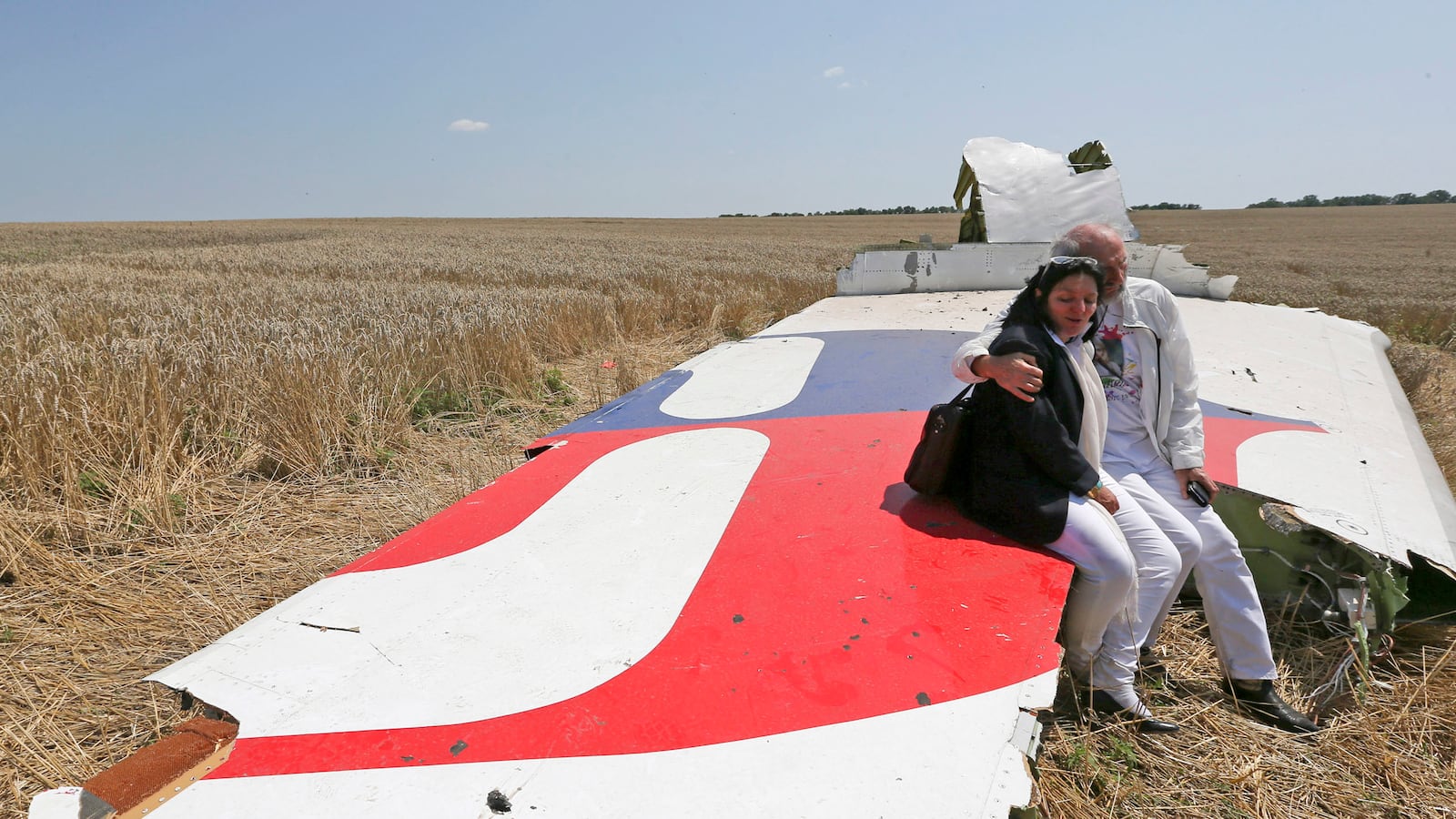When Malaysian Airlines Flight MH17 flew into Ukrainian air space just after midday on July 17 it was one of three airliners being tracked by air traffic controllers in both Ukraine and Russia over a war zone. At the same time, somewhere on the ground, a missile battery’s radar was switched on and its crew were actively looking for a target.
But there is no mention of missiles in today’s report by Dutch air crash investigators into what brought down Flight MH17. Instead it details how the Boeing 777 was riddled with holes created by “a large number of high energy objects from the outside.” The report includes a photograph of the cockpit floor, found in the widely-strewn wreckage, punctured by numerous holes, indicating that the crew were killed instantly. The front part of the 777 broke away first, falling free.
All of this is consistent with the airplane being struck by a barrage of shrapnel released when an anti-aircraft missile explodes—the warhead is designed not to explode on direct impact, it is triggered by a close proximity fuse to eviscerate the target.
Within days of the airplane’s destruction photographs taken by reporters at the site and examined by experts proved beyond any doubt that Flight MH17 had been targeted by a missile battery. But that was not within the remit of the Dutch investigators. Identifying the perpetrators of this appalling tragedy is a criminal matter, not a technical one.
However, the Dutch report introduces a chilling scenario. It shows that the Malaysian airliner may well have fallen victim to a high-altitude game of Russian roulette.
Flight MH17 left Amsterdam’s Schipol airport just after 10.30am, bound for Kuala Lumpur. Its flight plan had been approved by all of the relevant air traffic control agencies, including Ukraine’s, which is a member of Eurocontrol, which coordinates all flights across Europe.
By 12.53pm the flight was in voice contact with controllers at Dnipropetrovsk, Ukraine, known as Dnipro Control. In compliance with the flight plan, the 777 was at 33,000 feet. The controllers were concerned about “separation conflict” with another 777 at the same altitude, also flying east and approaching from behind.
The controllers asked Flight 17 to climb to 35,000 to increase the safety margin. The Malaysian crew said they could not comply—the report gives no reason for what was very likely a fateful decision. (The distance from Amsterdam to Kuala Lumpur is more than 6,000 miles. The range of the 777 is 7,200 miles, and so when Flight 17 left Amsterdam its gas tanks would have been fully loaded and the weight would have restricted its ability to climb into the increasingly thinner air of higher altitudes. Nonetheless, after flying for well over two hours enough of this fuel should have been burned off to climb another 2,000 feet.)
The Ukrainian controllers assented to this and, instead, instructed the other 777, a Signapore Airlines flight from Copenhagen to Singapore, to go to 35,000 feet, which it did.
Shortly afterward the Malaysian pilot requested to make a course change, 20 miles to the left, to avoid weather. There was an outbreak of thunderstorms in the area, and some of the thunderheads topped out at 34,000 feet. Again, the Ukrainian controllers assented.
Then the Malaysians asked to go to 34,000 feet, but were told that that corridor was not available. (The traffic was being directed on what is called the “odd standard” meaning that it was using altitudes with odd numbers, 33,000 or 35,000 feet.)
So the Malaysian 777 remained at 33,000 feet. There were war zone altitude restrictions in place forbidding commercial flights below 32,000 feet, giving Flight 17 the meager margin of 1,000 feet between it and the assumed area of danger. (A third aircraft close by at the time under Ukrainian control, an Airbus A330, was cruising west at 40,000 feet.)
At just after 1.20pm all communication with Flight MH17 was lost.
The Ukrainians called Russian controllers at Rostov to see if they could find it.
The Russians looked at their radar screens and exclaimed, “The target started falling apart.” (There is nothing sinister in the term “target” —it’s the radar term for what is being tracked.)
A little later the Russians told the Ukrainian controllers, “Yes, it’s disappeared.”
This timeline inevitably leaves a tragic “what if?” What if Flight MH17 had climbed to 35,000 feet and the other 777 had remained at 33,000 feet? Would the lower airplane have been the target?
The Dutch report emphasizes that, like other airlines choosing to fly over Ukraine that day, Malaysian Airlines was in full compliance with the then existing rules about flying over war zones. (The FAA prohibited commercial flights over Ukraine 24 hours later.)
Of course, after Flight MH17 regulators around the world realized that the standards being applied to flights over war zones were not tight enough— “war zone” is no longer a precise enough term to describe places where ungoverned and rogue armies have sophisticated and mobile weapons that no international agency keeps track of.
Action was promised. Sort of. The International Commercial Aviation Organization, sclerotic as ever, has “task forces” assigned to the problem. And when will it meet to consider making the skies safer? Next February.






